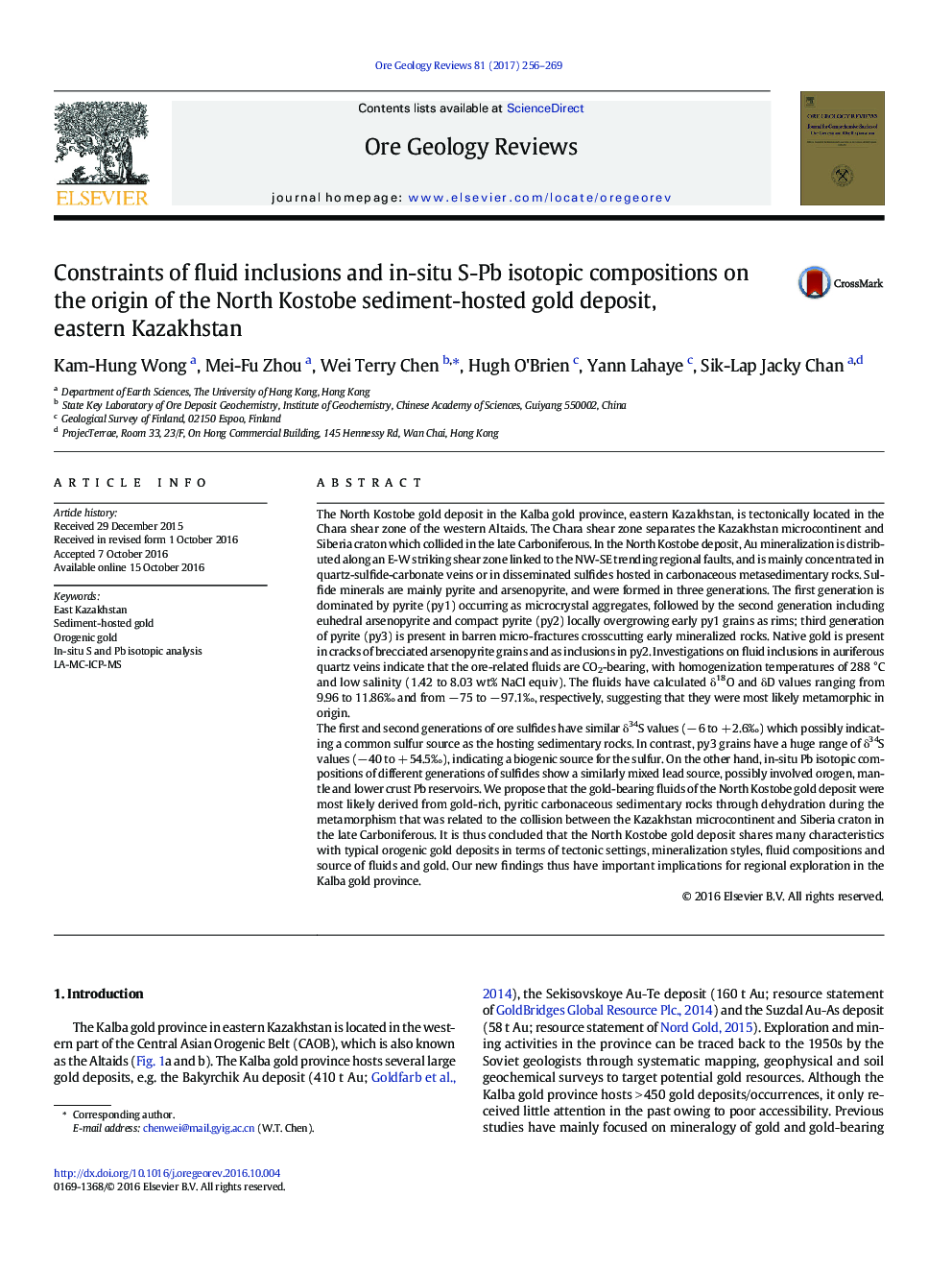| کد مقاله | کد نشریه | سال انتشار | مقاله انگلیسی | نسخه تمام متن |
|---|---|---|---|---|
| 6482024 | 1413928 | 2017 | 14 صفحه PDF | دانلود رایگان |
- Paleozoic orogenic gold deposits in eastern Kazakhstan
- Ore fluids were mesothermal, CO2-rich and low salinity.
- Fluids were generated from sedimentary rocks by metamorphic devolatilization.
- In-situ measurement of S and Pb isotopes on sulfides by LA-MC-ICPMS
The North Kostobe gold deposit in the Kalba gold province, eastern Kazakhstan, is tectonically located in the Chara shear zone of the western Altaids. The Chara shear zone separates the Kazakhstan microcontinent and Siberia craton which collided in the late Carboniferous. In the North Kostobe deposit, Au mineralization is distributed along an E-W striking shear zone linked to the NW-SE trending regional faults, and is mainly concentrated in quartz-sulfide-carbonate veins or in disseminated sulfides hosted in carbonaceous metasedimentary rocks. Sulfide minerals are mainly pyrite and arsenopyrite, and were formed in three generations. The first generation is dominated by pyrite (py1) occurring as microcrystal aggregates, followed by the second generation including euhedral arsenopyrite and compact pyrite (py2) locally overgrowing early py1 grains as rims; third generation of pyrite (py3) is present in barren micro-fractures crosscutting early mineralized rocks. Native gold is present in cracks of brecciated arsenopyrite grains and as inclusions in py2. Investigations on fluid inclusions in auriferous quartz veins indicate that the ore-related fluids are CO2-bearing, with homogenization temperatures of 288 °C and low salinity (1.42 to 8.03 wt% NaCl equiv). The fluids have calculated δ18O and δD values ranging from 9.96 to 11.86â° and from â 75 to â 97.1â°, respectively, suggesting that they were most likely metamorphic in origin.The first and second generations of ore sulfides have similar δ34S values (â 6 to + 2.6â°) which possibly indicating a common sulfur source as the hosting sedimentary rocks. In contrast, py3 grains have a huge range of δ34S values (â 40 to + 54.5â°), indicating a biogenic source for the sulfur. On the other hand, in-situ Pb isotopic compositions of different generations of sulfides show a similarly mixed lead source, possibly involved orogen, mantle and lower crust Pb reservoirs. We propose that the gold-bearing fluids of the North Kostobe gold deposit were most likely derived from gold-rich, pyritic carbonaceous sedimentary rocks through dehydration during the metamorphism that was related to the collision between the Kazakhstan microcontinent and Siberia craton in the late Carboniferous. It is thus concluded that the North Kostobe gold deposit shares many characteristics with typical orogenic gold deposits in terms of tectonic settings, mineralization styles, fluid compositions and source of fluids and gold. Our new findings thus have important implications for regional exploration in the Kalba gold province.
Journal: Ore Geology Reviews - Volume 81, Part 1, March 2017, Pages 256-269
